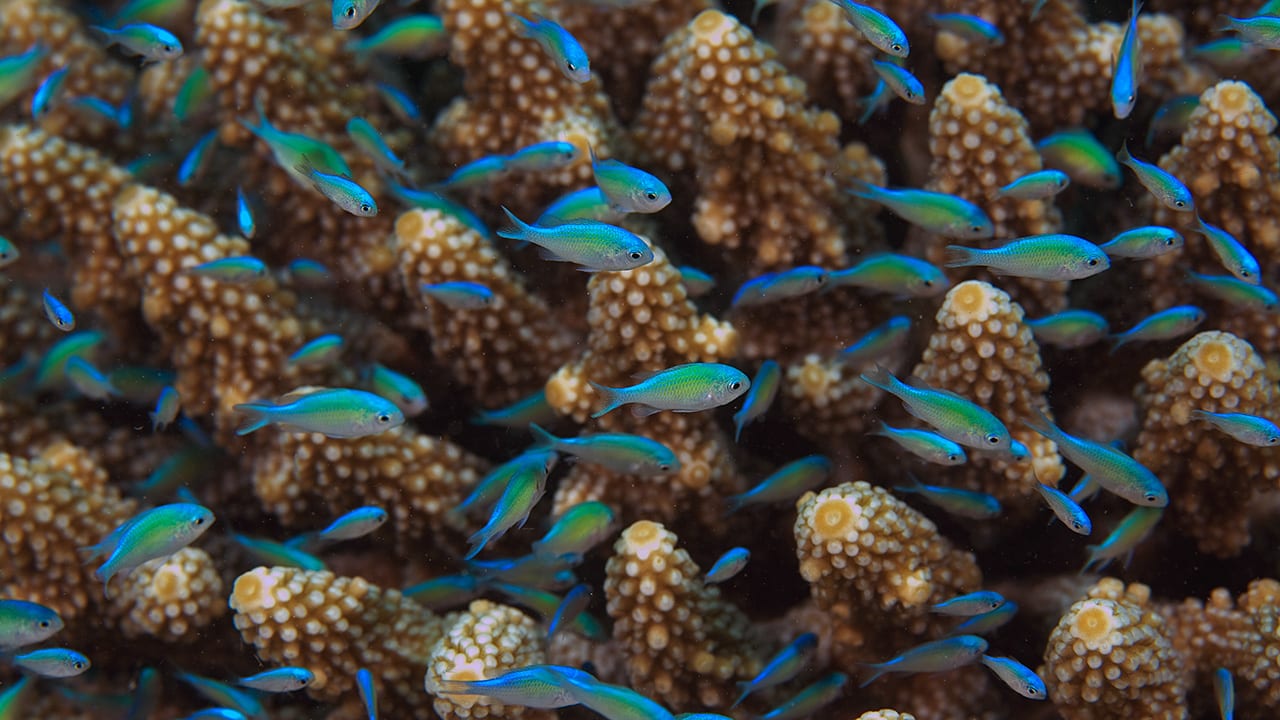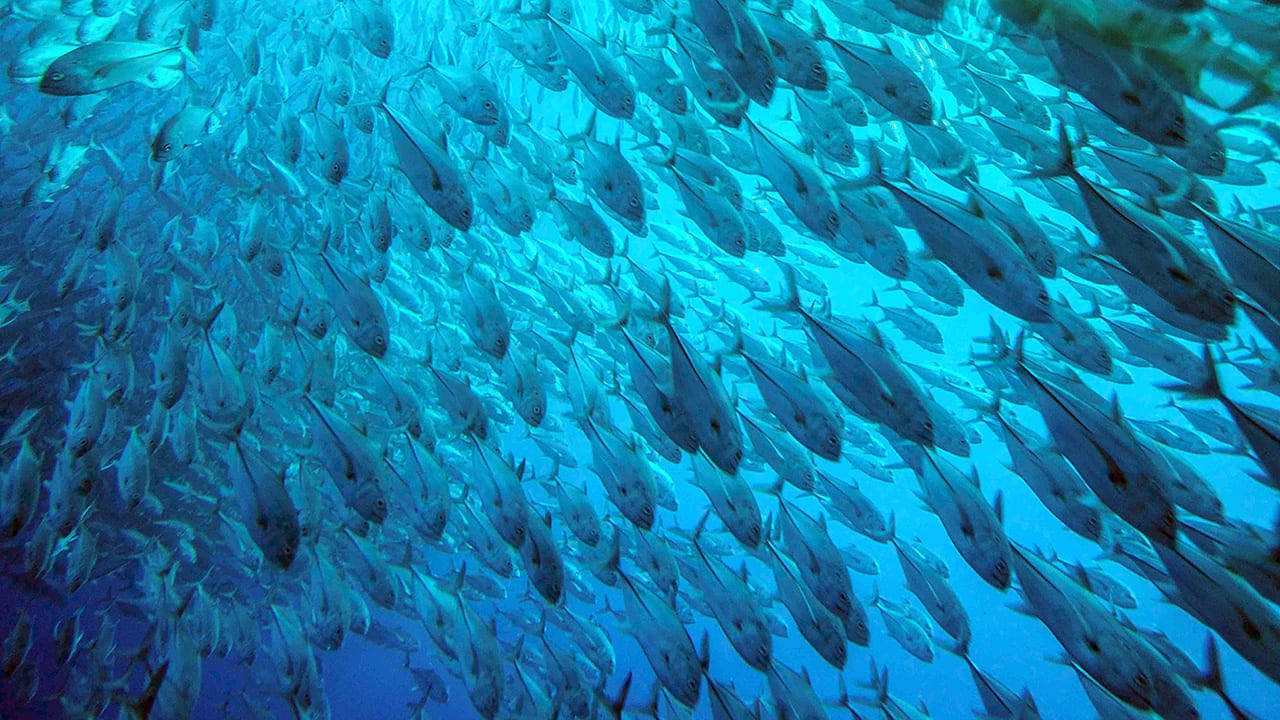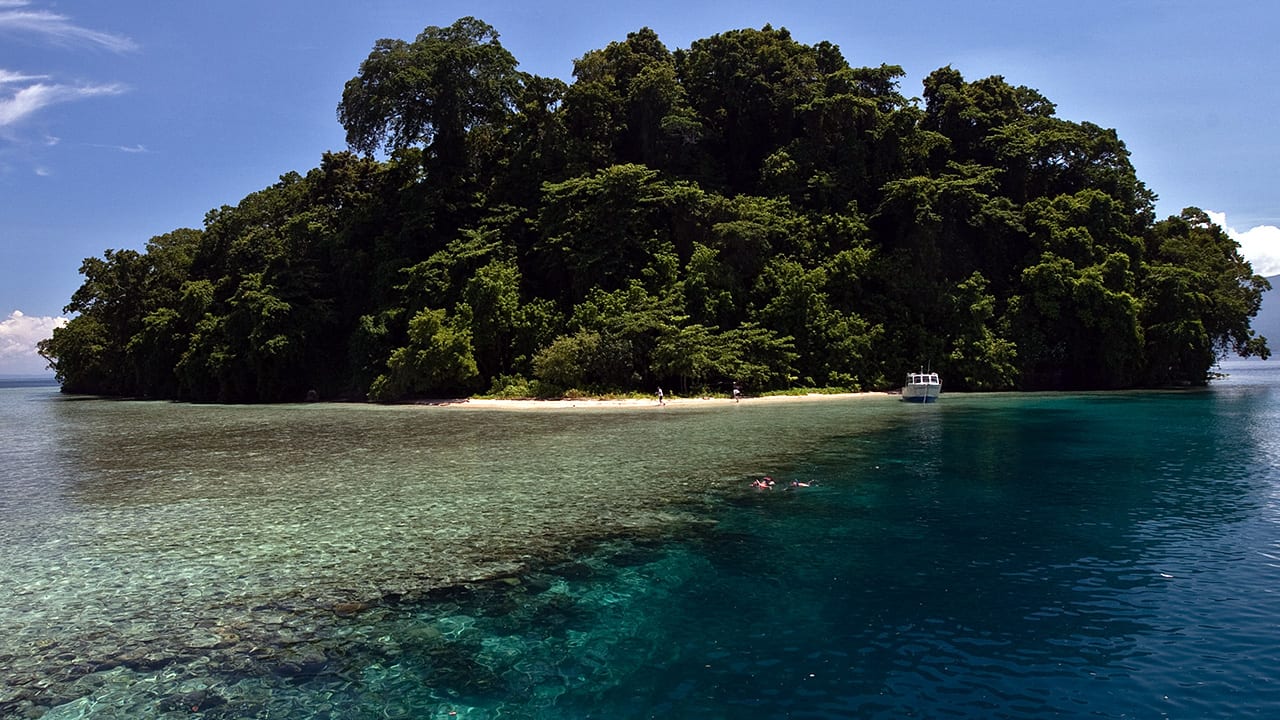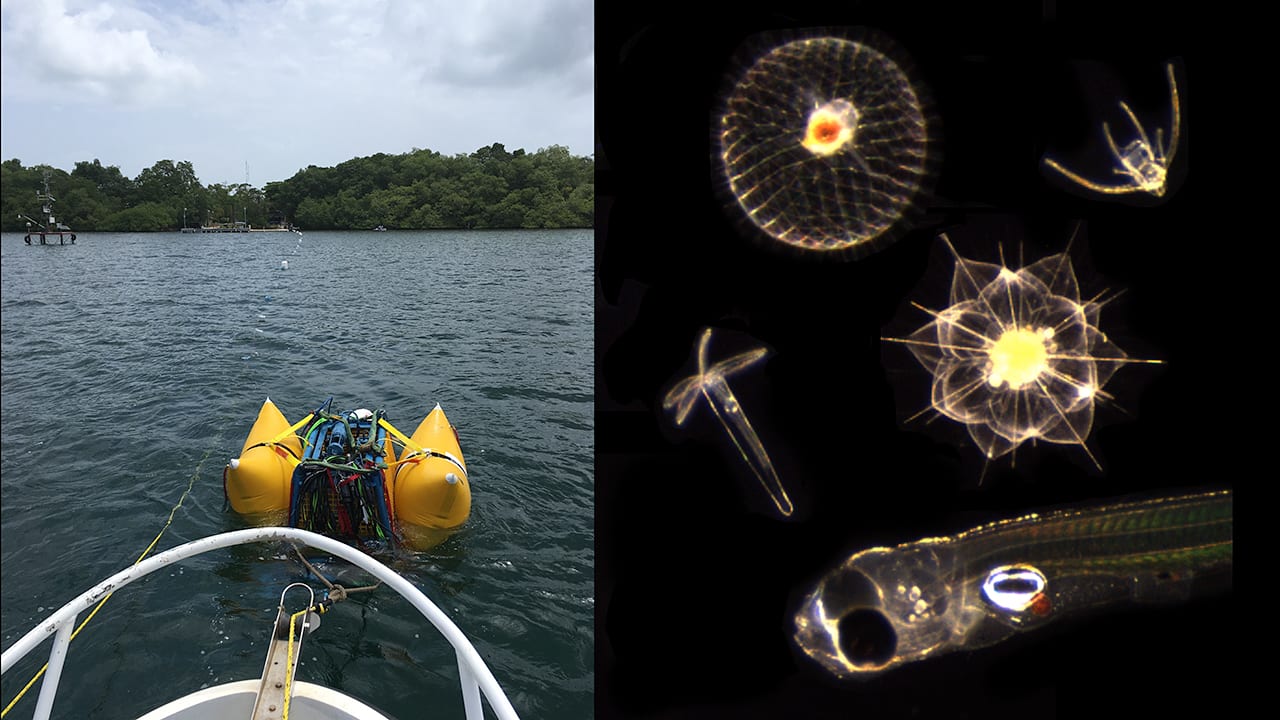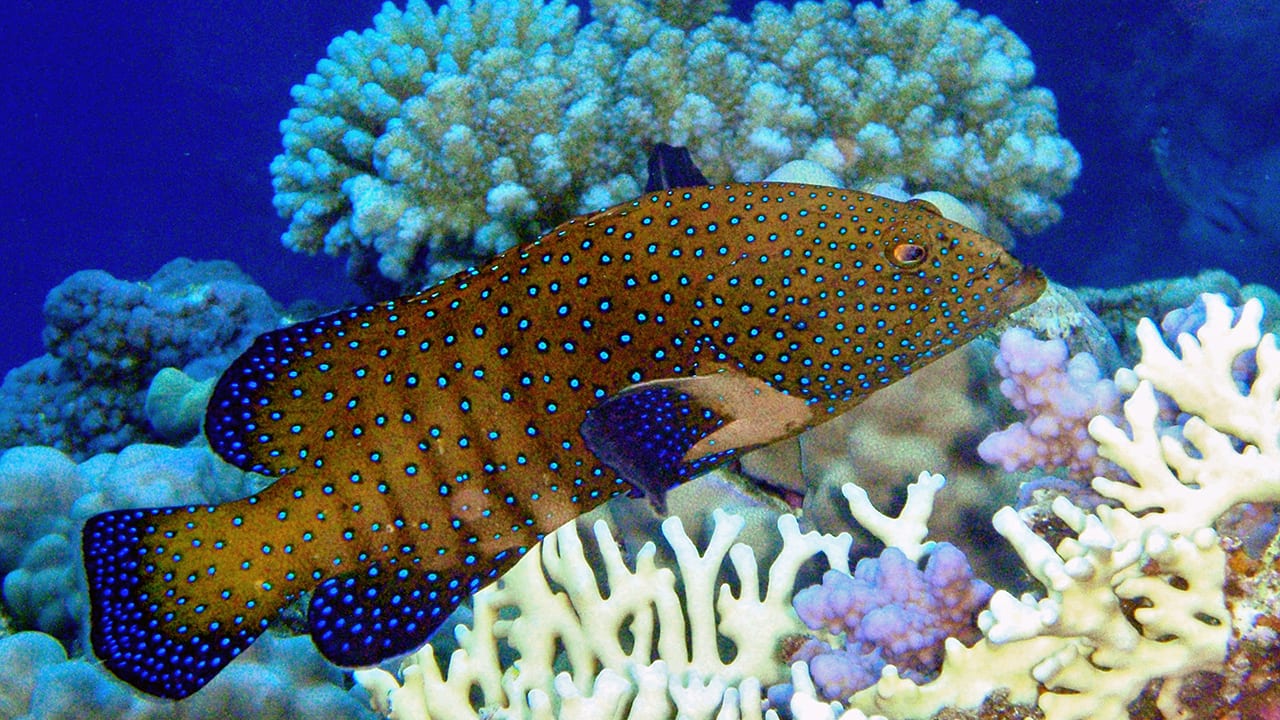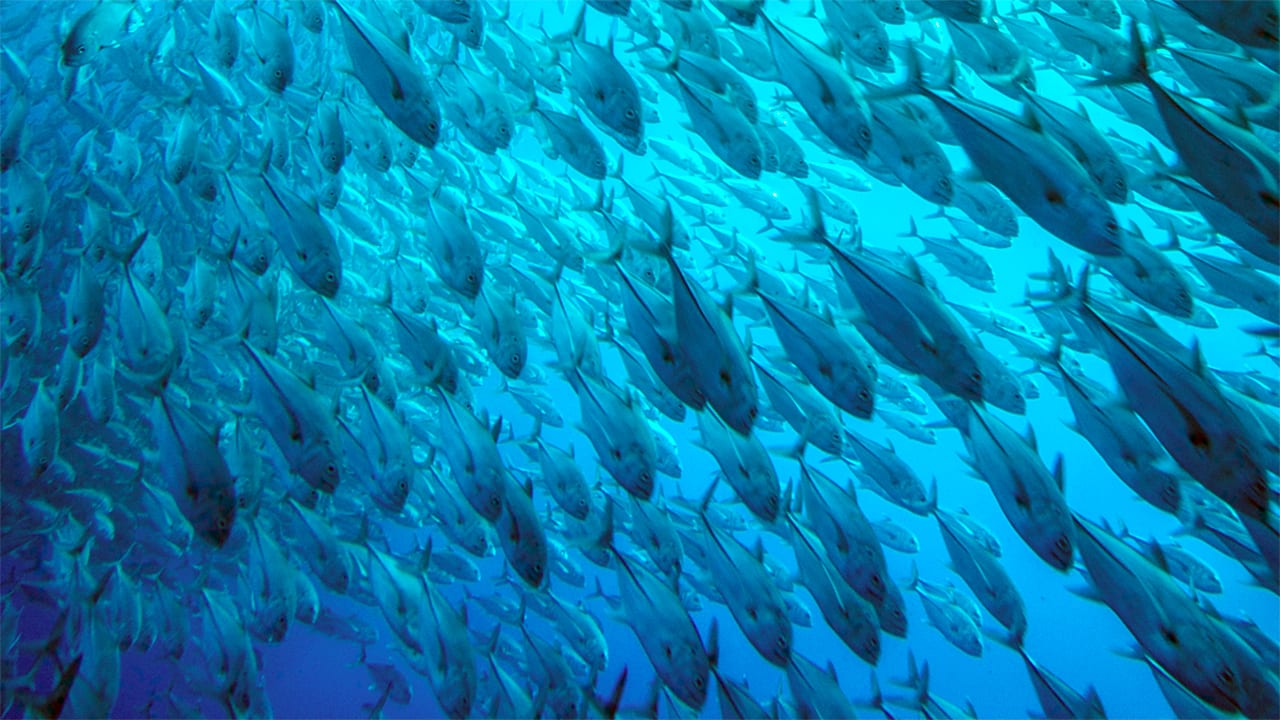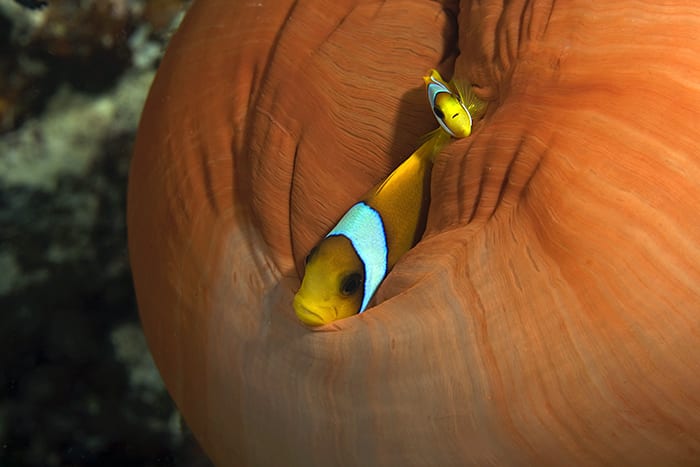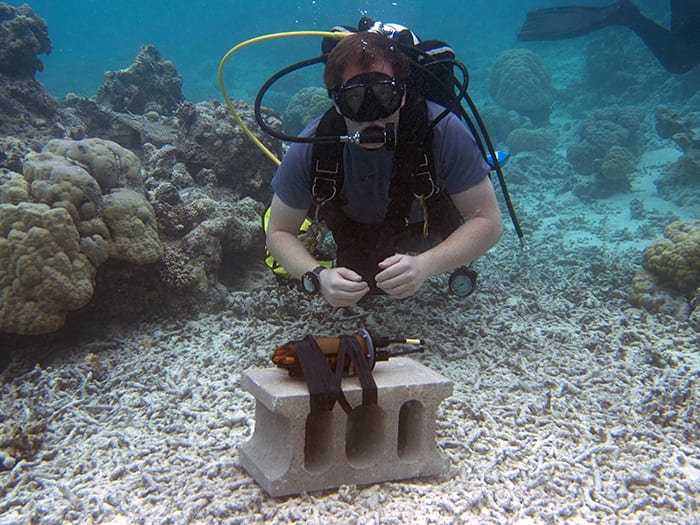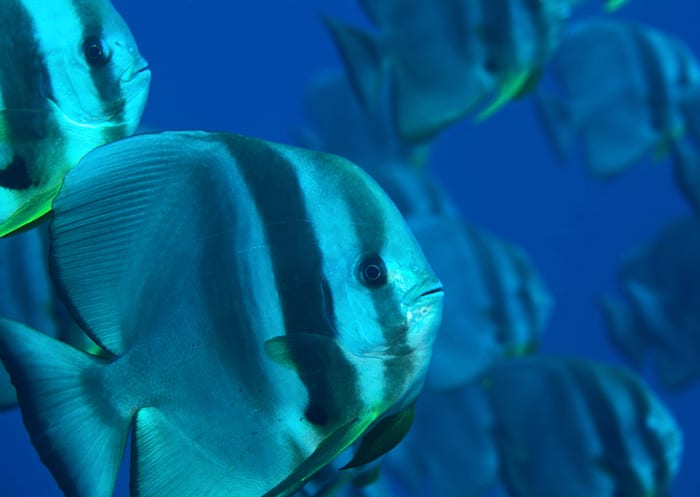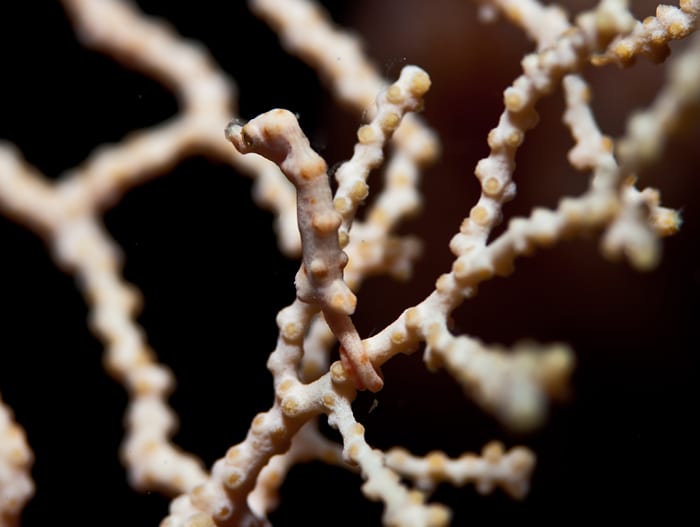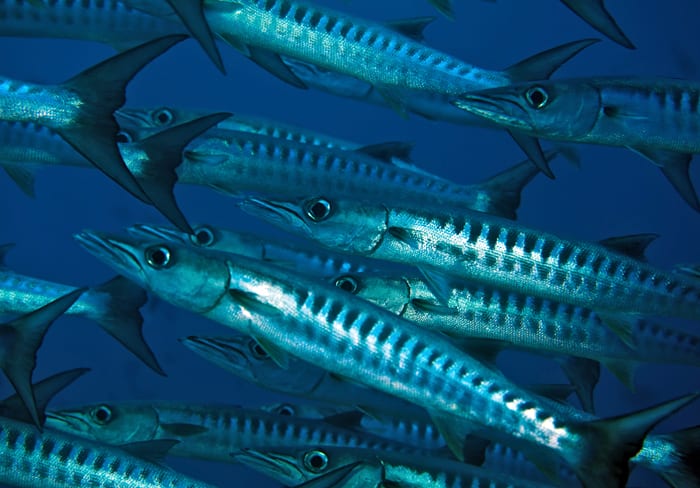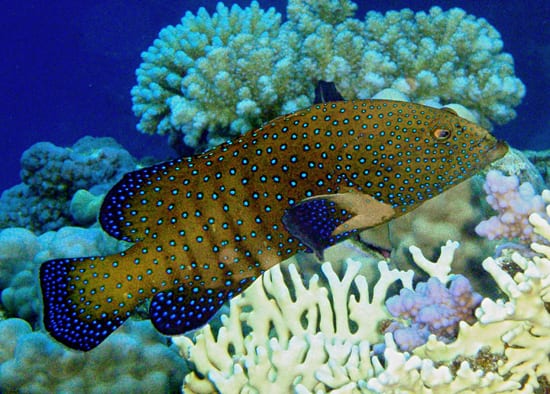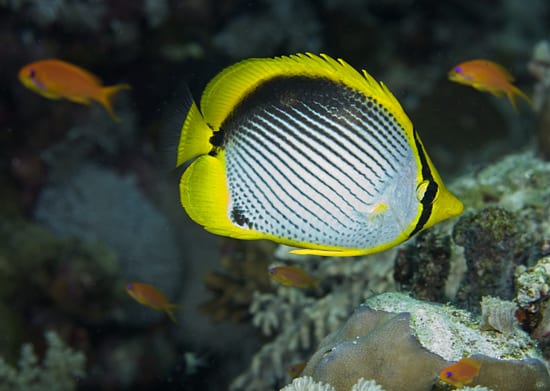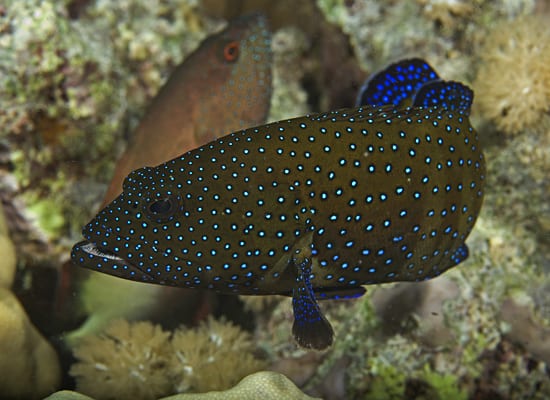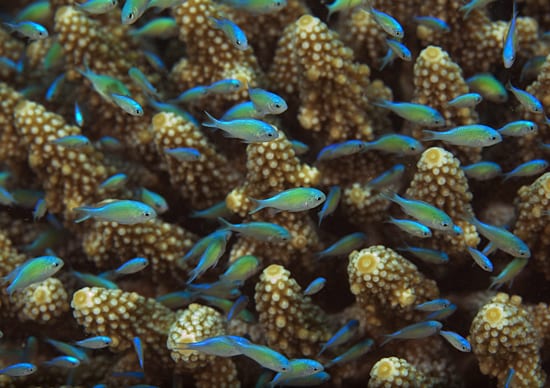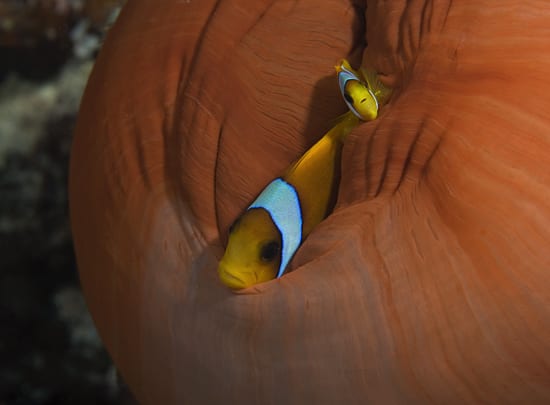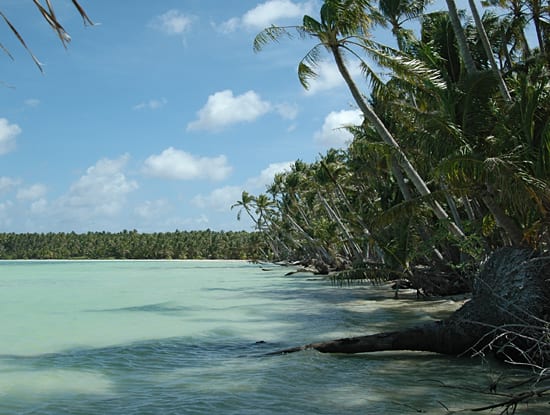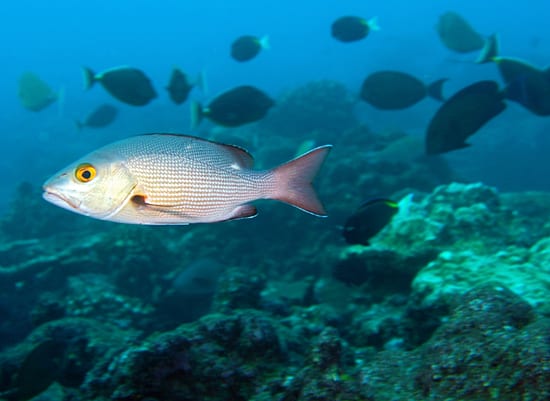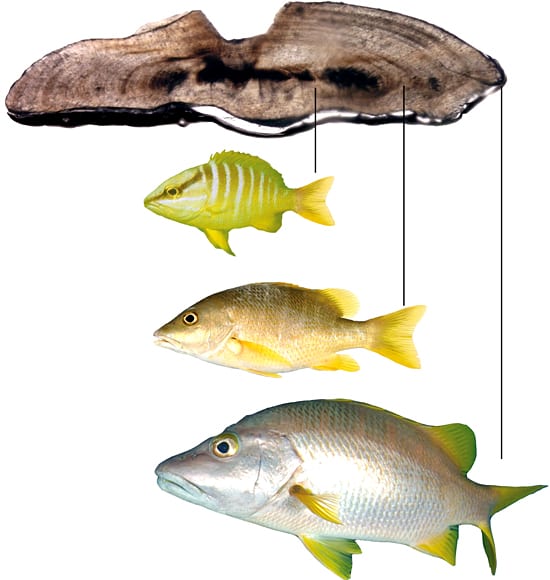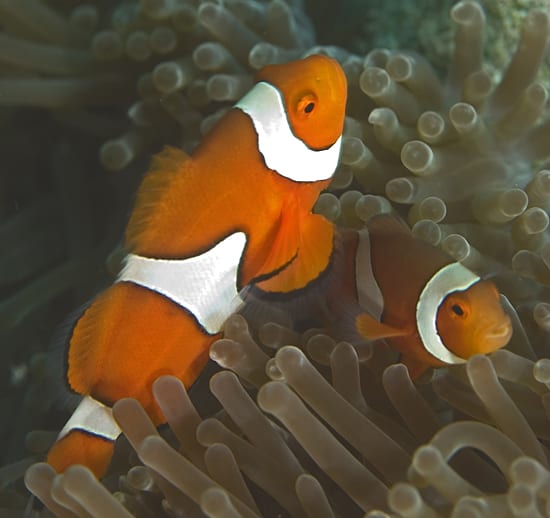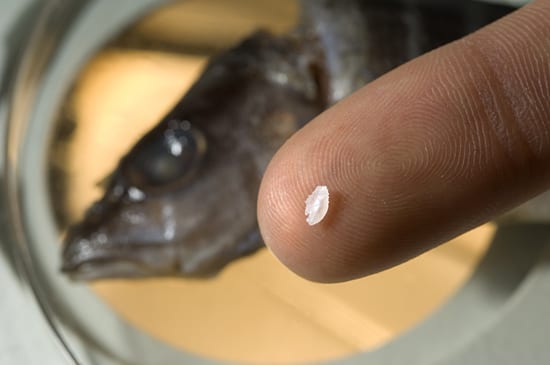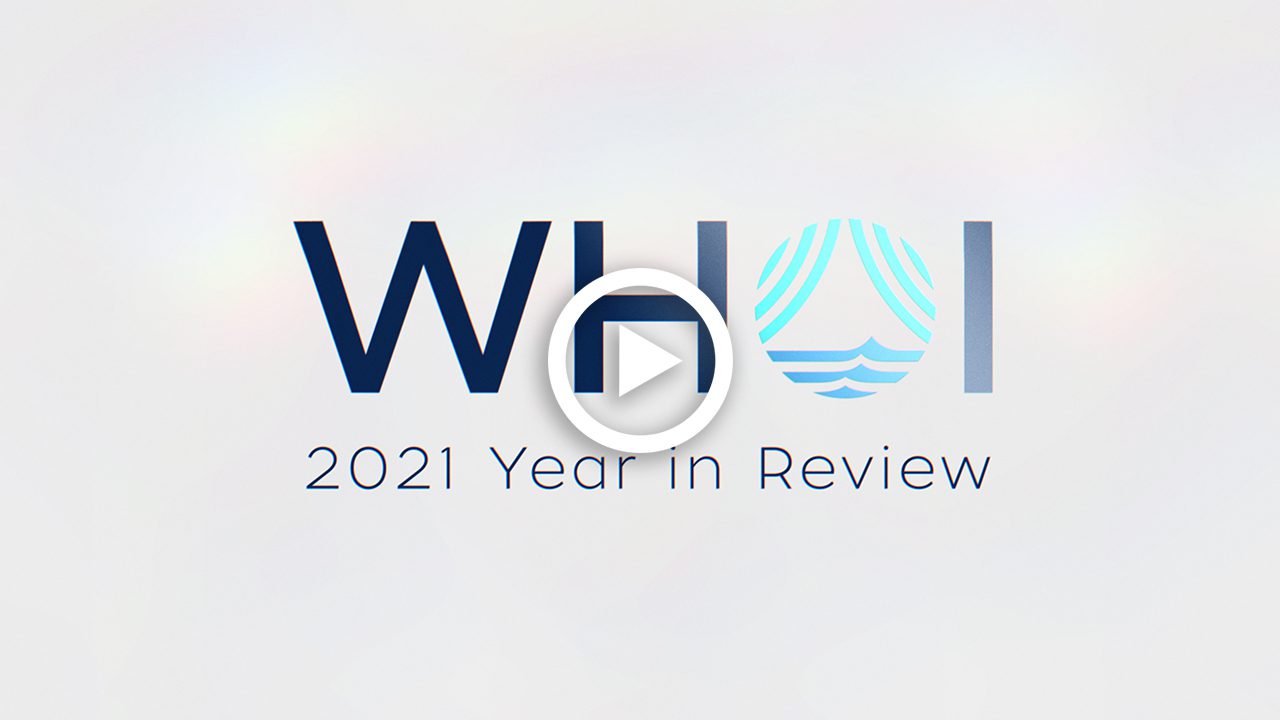Multimedia Items
Taking a Global Approach
A school of blue-green chromis swim in colony of coral in the Farasan Banks off Saudi Arabia. An international team of scientists, including WHOI biologist Simon Thorrold, conducted a rapid…
Read MoreCorals Under Threat
A large school of bigeye trevally swim past a submarine carrying WHOI scientists descending in Cabu Pulmo National Park, home of the oldest of only three coral reefs on the…
Read MoreReservation Required?
Restoff Island in Kimbe Bay, Papua New Guinea, is a biodiversity hotspot that is home to hundreds of coral reef fish species. It is also one of eight sites sampled…
Read MoreEyes on Both Coasts
OceanCube is an autonomous underwater coastal observatory that provides real-time data and images from a variety of biological, physical, and chemical sensors. A team from WHOI led by biologist Scott…
Read MoreBright Lights in the Blue
In brilliant color, a peacock grouper (Cephalopholus argus) swims among corals in the Farasan Banks in the Red Sea in 2009. WHOI biologist Simon Thorrold and international colleagues were there…
Read MoreBack to School
A large school of bigeye trevally swam past a submarine carrying WHOI scientists descending in Cabu Pulmo National Park, home of the oldest of only three coral reefs on the…
Read MoreBoo!
A pair of Red Sea anemonefish (Amphiprion bicinctus) take shelter in a pumpkin-colored sea anemone. The image was taken by Simon Thorrold, a biologist and the director of the Ocean Life…
Read MoreListening In
MIT-WHOI Joint Program graduate Max Kaplan positions a DMON acoustic recording device on Helen Reef, the southernmost island of Palau, in the far western Pacific. The DMON records sounds produced…
Read MoreBats out of the Blue
Fish ecologist Simon Thorrold‘s research on pristine coral reefs in Kimbe Bay, Papua New Guinea yields both scientific results and beautiful images—such as these Teira batfish (which can grow to…
Read MoreHiding in Plain Sight
Can you spot the pygmy seahorse (Hippocampus sp.)? (Hint: Its head is pointing back and to the left, with its left eye partly visible.) This little fellow, about a quarter…
Read MoreCelebrating World Oceans Day
On World Oceans Day, let us give thanks for some of the ocean’s largest and fiercest inhabitants, like this school of blackfin barracuda (Sphyraena qenie), hovering near a coral reef…
Read MoreSwimming peacock
A peacock grouper (Cephalopholus argus) swims along the Farasan Banks in June 2009. WHOI biologist Simon Thorrold and international colleagues were there to conduct an ecological survey of corals and…
Read MoreBlackback in the Red Sea
A blackbacked butterflyfish (Chaetodon melannotus) feeds on soft corals in the along the Red Sea coast of Saudi Arabia in an area known as the Farasan Banks. An international team…
Read MoreSome serious teeth
WHOI biologist Simon Thorrold snapped this image of a peacock grouper (Cephalopholus argus) while working in Saudi Arabia in June 2009. Thorrold and an international team conducted a rapid, ecological…
Read MoreWave of blue and green
A school of colorful, bluegreen chromis (Chromis viridis) seek shelter in a coral colony in the Farasan Banks. An international team of scientists, including WHOI biologist Simon Thorrold, conducted a…
Read MoreBoo!
A pair of Red Sea anemonefish (Amphiprion bicinctus) take shelter in a pumpkin-colored sea anemone. An international team of scientists conducted a rapid, ecological survey of corals and coral reef…
Read MoreTropical Isle
Eight atolls in the Pacific represent the world’s largest marine protected area — the Phoenix Islands Protected Area. Atolls are low ring-shaped islands of coral rubble that form over millennia…
Read MoreJust passin’ through?
Larry Madin, director of research at the Woods Hole Oceanographic Institution (WHOI) and also a marine biologist and diver, snapped this image while surveying undersea life on a September 2009…
Read MoreRing around the ear bone
As a schoolmaster snapper grows, its ear bones, or otoliths, form sequential rings, much like a tree trunk, corresponding to different times in the fish’s life. Each ring in the…
Read MoreTracking Nemo and his relatives
A pair of clownfish (Amphiprion percula) shelter among anemones in Kimbe Bay, Papua New Guinea. These coral reef fish — the same species as Disney’s famed Nemo — are the…
Read MoreTiny bone packs a lifetime of information
The small white object on MIT/WHOI Joint Program student Kelton McMahon‘s finger is a fish’s otolith, or ear bone. Otoliths are composed of layers secreted by a fish every day…
Read MoreSonic Youth: Researchers Investigate if Sound Can Save Corals
What does a healthy coral reef SOUND like? It’s bursting with sound, full of the croaks, purrs, and grunts of various fish. New research suggests that larval animals use this symphony of sounds to help them determine where they should live and grow. Could this new knowledge help protect reef systems that are already vulnerable to warming oceans and other stressors?
Read More2021 Year in Review
Re-live the best of 2021 with this montage showcasing just some of WHOI’s ocean science, technology, and engineering highlights. WHOI researchers are active in upwards of 800 projects around the world at any time, providing critical information about some of the most urgent challenges facing humanity and the planet we call home. As part of the WHOI community, we thank you for your dedication to our ocean, our future, and our planet. Best wishes for a happy and healthy 2022!
Read More
